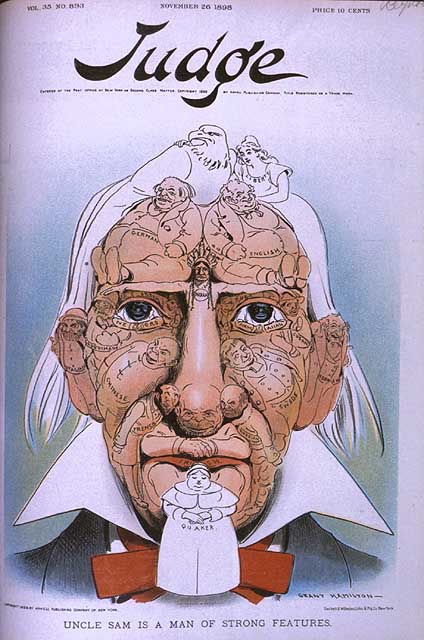We sat in the quiet like we always did, a whole bunch of people of immigrant descent. Something was different today, there was an extra large display screen that we (I) wished we could have in our haus. The conversation started as a small fire and exploded, (not literally, or else, we'd all be kinds of messed up right now). We pondered as to why Jacob Riis cared about how the other half lived and came up with many ideas.
1) Riis, himself, was poor and worked his way up to middle class and empathized with the poor and their condition of living.
2) The oppression of the poor would someday drive them crazy enough to revolt against the middle and higher class. The poor is what makes the world go round. (viva la revolucion!)
3) He was just an altruistic kind of human being. (we the little people thank you)
Professor Davis then proceeded with his cool keyboard to flip through the photographs that Jacob Riis and Lewis Hine took. He then brought about the question of how the photographs were taken and it was usually planned. (Ooops) Apparently, since photography was still in its infant stage, the photographer would have had to lug a giant camera around and thus the element of surprise would be gone. We discussed about this in great length, if the planning of the photographs affected the picture and overall "feel" of the photograph.
Some said: "No it doesn't because they weren't given the clothes they were wearing and the setting that they were in. So, the picture still captured the most essential aspect of tenement living" (This isn't word for word)
There was a picture with three boys sleeping on a barrel and one boy was seen to be smirking. Some questioned as to whether it was because the child was giddy with excitement to have his picture taken, that it spilled out to his sleeping face.
Besides the discussion of Riis and the photographs. The conditions of immigrants today were discussed as well. People saw descents of China and Mexico living in tenement like conditions. There are people who share apartments between 5+ people and those who live in clutter. The reason why they can't do anything about it?
1) New immigrants do not possess green cards/visas/passports. No one knows about their situations and often times they don't know where to get help.
2) They have no money or time to speak up about their problems because they have work an excessive amount to send money back to their countries.
3) First generation-ers would rather suffer the hard times to make sure that the next generation or the generation after that would be able to live a better life, as to live a selfless life.





